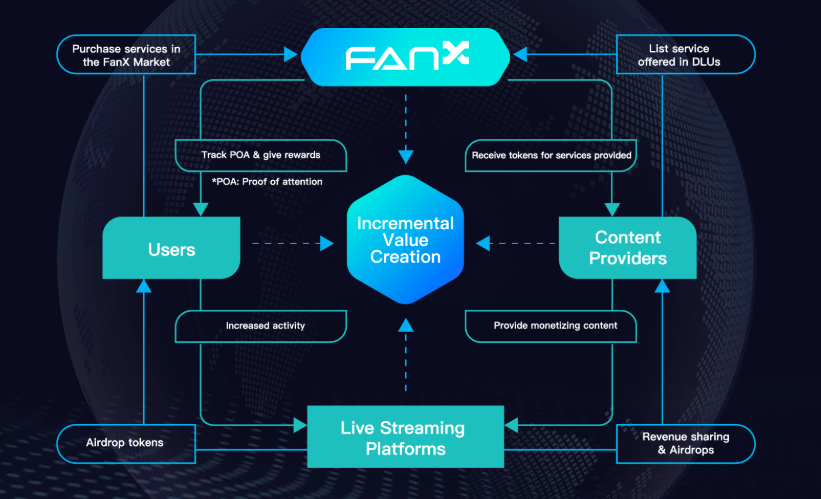Social media has had one of the biggest impacts on the world of marketing that the industry has ever seen, taking marketing out of the hands of the professionals and putting the power into internet-savvy high school and college kids. Simultaneously, blockchain-technology has had the same effect on the financial industry, moving money away from the hands of Wall Street bankers and into the digital wallets of computer geeks. So, what happens when these waves of technological innovations collide? You get internet-savvy high school social media influencers making a profit with the help of computer geeks, and FanX is here to make it happen.
FanX is a platform-agnostic social media ecosystem that captures all social media contribution and quantifies the information in order to reward users and content providers (CP) with FanX tokens. While FanX will be working with various forms of social media platforms, the technology is operated by FanX International Pte Ltd, which places a particular focus on live streaming platforms. FanX is ultimately a big data analytics and AI technology platform which specializes in gathering, analyzing, and quantifying social media operational trends, community engagement and content providers.

The most current social media and live streaming platforms, such as Facebook and Instagram, are making money off of ads that profit from the engagement of its users. FanX believes that users should be properly rewarded for their time and money spent engaging and driving traffic to a given platform. A member of the FanX team, Feng Shen, has said “we believe that the social media user is not just a consumer but a supplier who is not fairly compensated for their engagement on typical social media platforms today.” FanX, he says, has “established a system to quantify and thereby reward users and CPs for the efforts spent on social media; improving content quality, increasing fan engagement, and creating a more equitable and democratized social community.”
China’s live streaming market size is estimated to be worth well into the billions, and is only expected to grow as the demand for “real” content and community building initiatives grow. Instagram’s latest updates to its app, such as IGTV and the ability to do live video calls, adds more ways for the platform to engage its users. Furthermore, it adds a greater incentive for brands to use new forms of advertising and for contributors to profit from them. Through this chain, it is the user’s time and money that is taken advantage of. FanX has recognized this flaw in the industry and in order to build a reward system that reciprocates value back to users and contributors accordingly, the team has set up an analytical system of measurement. This system rewards users based on various KPIs, such as platform login counts and reposts.
According to the FanX press release, an average user logs 1.72 hours per day on social platforms, which ends up representing about 28% of all online activity. Social media’s fundamental business model treats users and influencer or content provider engagement as inventory for sale. FanX would like to reform this model by quantifying the value of user and content provider engagement in order to reciprocate such value back to the respective parties.
It’s not surprising that with the rise of blockchain and heightened awareness of its potential, industries which are highly dependent on money and advertising see decentralized initiatives as a threat. FanX is not the first, nor will it be the last social media platform to join the wave of companies offering fair redistribution of money and reward. While FanX has the upper hand in its analytical capabilities and use of domain-specific algorithms, there are many existing products looking to do the same. FanX will have to speed up its roadmap to keep up with the fast paced nature of social media, before the large platforms tune into the necessity of acknowledging its users. In the near future, rewarding and incentivizing users will be a standard, not just for social media, but for any platform that couldn’t survive without the traffic that its users bring–and this is the way it should be!
